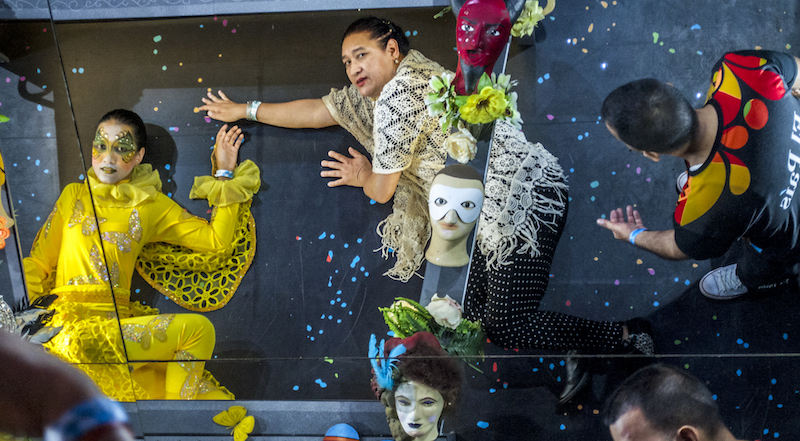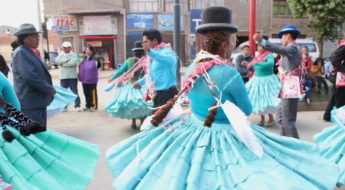10 CURIOSITIES ABOUT COLOMBIAN CULTURE (OR WELL…CALI)

I have been in Cali, Colombia, for three months now. During these three months I’ve learned quite a few things about locals in Cali and about the Colombian culture in general. Here are ten such curiosities which have caught my attention and have once again proved that cultural differences still do exist! (Gladly!)
Featured picture: Julián Rengifo O
1. Ahorita
Ahorita is a very flexible concept in time and space. A lot of things happen ahorita (diminutive of ahora – now) and one could easily think that ahorita is even sooner than now. Yet nope. Ahorita can mean anything from five minutes to five years. For example, when my flatmate Julian says “nos vemos ahorita” (see you just now), sometimes it means he’s going to the bakery nearby, sometimes to his parents’ place for a weekend. Thus, use ahorita when you actually have no idea about when a given thing will happen or when you don’t want to disappoint your counterpart by telling the truth.
2. Mango biche
People in Finland can easily be heard complaining about green, unripe mangos. As Finland is not a tropical country, all fruit basically comes to our shelves raw. Yet, guess what? Raw mangos are actually a national delicacy in Colombia (at least in Cali)! Unripe mango, mango biche, is a typical taste in ice creams, granizados (crushed ice), popsicles… Mango biche is also sold as such on the streets, cut into thin slices and sprinkled with salt and lemon on top. Ripe mangos are not half as popular within the people of Cali as mango biche are. And no wonder: it’s delicious! (I’ve actually always loved raw mangos, yet have never known how good they taste with salt and lemon.)
3. Agua’e lulo
Agua’e lulo is a party culture in Cali from back in the 1970s. Back in the day, agua’e lulos were born as a result of underaged teens not being able to enter bars and drink alcohol. They thus started organizing home parties, where drinks made out of lulo (a delicious, tropical fruit, very popular in Cali) were served to the guests. Nowadays, agua’e lulos are parties usually either on Satudays or Sundays, during daytime. Obviously, even in the 70s, teenagers used to mix alcohol into their supposedly non-alcoholic drinks…
4. Usted
Usted as the formal pronoun for you (Sie in German, Lei in Italian, Te in Finnish) is typically used among Colombians, even between friends and family members. People (at least in Cali) often seem to switch between Usted and tu (Du in German, tu in Italian, sinä in Finnish) quite arbitrarily, yet the more you observe their usage, the more you notice the situations they are typically used in. For example, if you simply ask your mother if she wants to eat, you will typically ask: “que quieres comer?”, using the informal form. Yet, if you want to say: “you go ahead and eat whatever you want”, you would say: “Usted coma lo que quire”, using the formal form. So, it is used more in cases where in Finnish you could jokingly say “Rouva/Herra on hyvä vain ja syö mitä haluaa”.
5. En 8 días, en 15 días
As a Finn, I’ve learned that a week has seven days. Yet, in Colombia, if something happens in a week, it happens en ocho días (in eight days). If something happens in two weeks, it happens en quince días (in 15 days). So, even though a week supposedly has eight days, two weeks don’t have sixteen days. How confusing is that?! The bottomline is, from Monday to Monday it’s eight days.
6. Always reconfirm appointments
In Northern Europe, if you schedule an appointment for a certain day, it’s a done deal. You write it in your calendar and wait for the day to come. If something suddenly comes up and you unexpectedly can’t make it to the appointment, you cancel. In Colombia it’s the other way around. A scheduled appointment is like an initial plan. If that plan is not confirmed, it shall forever stay only a plan. No need to cancel it, because it has never been confirmed. For example, when I accredited myself for a salsa show called Delirio, two weeks before the event I received an official email confirming my accreditation. However, when I got to the venue on the night of the event, my name was not on the press list. “You’re the Finnish journalist?! You never confirmed, so I thought you weren’t coming!” said the press manager, as she was called to the rescue. “But I did confirm, right after you sent me your email”, I replied”. “Yes, but that was two weeks ago. You should always reconfirm a couple of days before the event”, she taught me.
7. So you have a uniform? Wear it!
It’s a typical custom in Colombia to go around in whatever uniform you happen to have. Kids wear school uniforms and they often wear them for the whole day – especially if they’re from a prestigious school. As for adults, students of medicine, doctors, nurses, beauty parlor workers, dance teachers etc., also love to wear their uniforms even after classes and when the workday is over. Busses are filled with people in their uniforms and it’s not uncommon to go eat an arepa (a corn pancake) and be greeted by a man next to you, whose coat reads Dr. Manuel Rodriguez, specialist of gynaecology.
8. Fluid concept of time
Latin Americans are known for having a very fluid concept of time. As a general rule of thumb, no matter how late you think you are, you’ll probably be the first one to arrive to an appointment anyway. Although I’m a Finn, I’m used to it, as my sister and mother are probably the world masters in being late (and always having a great explanation for it). And, as a matter of fact, I’m not very timely myself either. However, the great thing is that people never directly say they’ll be late. If they’re supposed to meet you at 5pm and they’re still at home at 5pm, they’ll write you a message saying: “estoy llegando” (I’m on my way). If they’ve just woken up at 5pm, they’ll say: “estoy saliendo” (I’m just about to leave). If they’re on the metro at 5pm, they’ll tell you: “ya voy” (coming). If they have no intentions on leaving home any time soon and its already 5pm, they’ll say: “Ay! Me cogió la tarde” (Oh! I lost track of time). The last one means, they’ll be really late.
9. Yyyyy…puede ser
Colombians are great in being indirect. Saying NO is considered impolite, and people will much rather say yes than no to you, just to be polite in the moment. In fact, especially the Dutch and Germans are considered very impolite by Colombians. So, when you suggest something to a Colombian what they don’t really want to do, be sure to hear “yyyy….puede ser” (could be). Although it sounds positive and may give you hope, it usually means NO. Also, don’t expect for negative feedback no matter what you do. You have to learn to read between the lines.
10. All family relations mixed up
This is not just in Cali or in Colombia, but in whole Latin America. Mi hijo/hija (muy son/daughter) can be used for your father/mother, for your son/daughter, for a client at a shop, for a total stranger on the street. Basically anyone. So can mami and papi (mom and dad). Mamacita and papito (diminutives for mother and father), instead, usually have a sexual connotation. A hot woman is on the street is often catcalled as mamacita and a hot man respectively papito.
A pit stop in Paraguay
At the moment, I am actually in Asunción, Paraguay, again. I came here for a month, after being away for way too long! Here are some curiosities about this particular culture to those of you who haven’t read my 10 QUESTIONS TO A PARAGUAYAN yet.
















